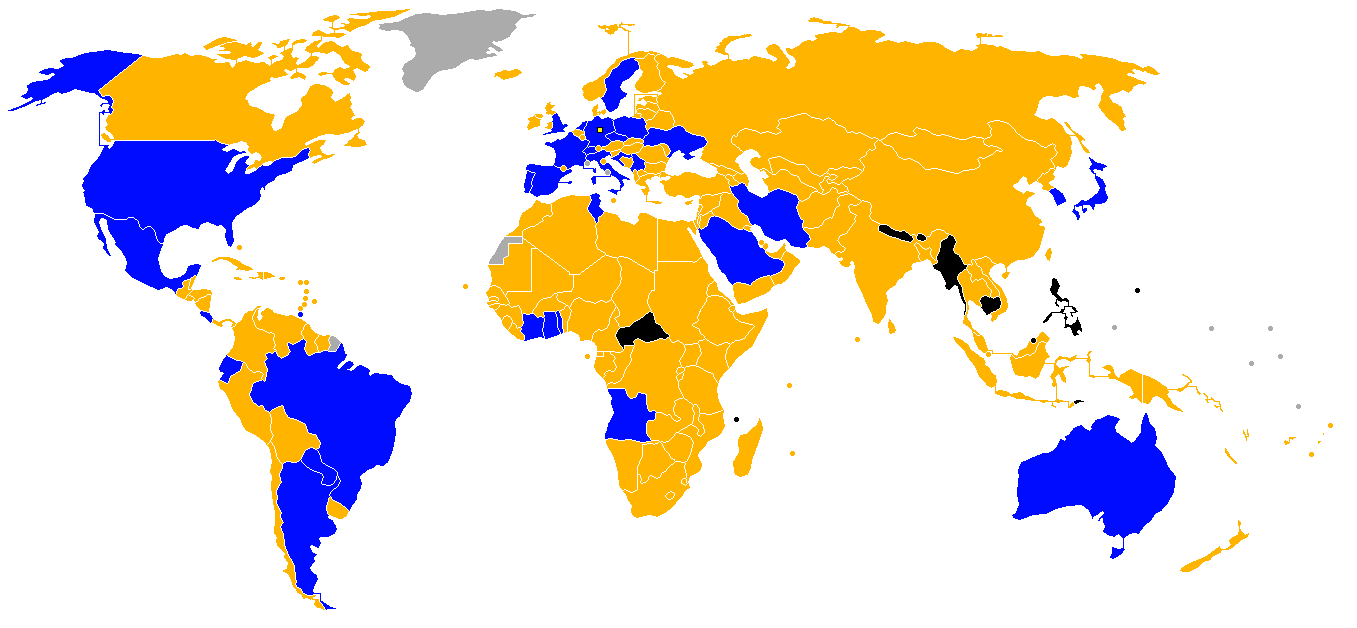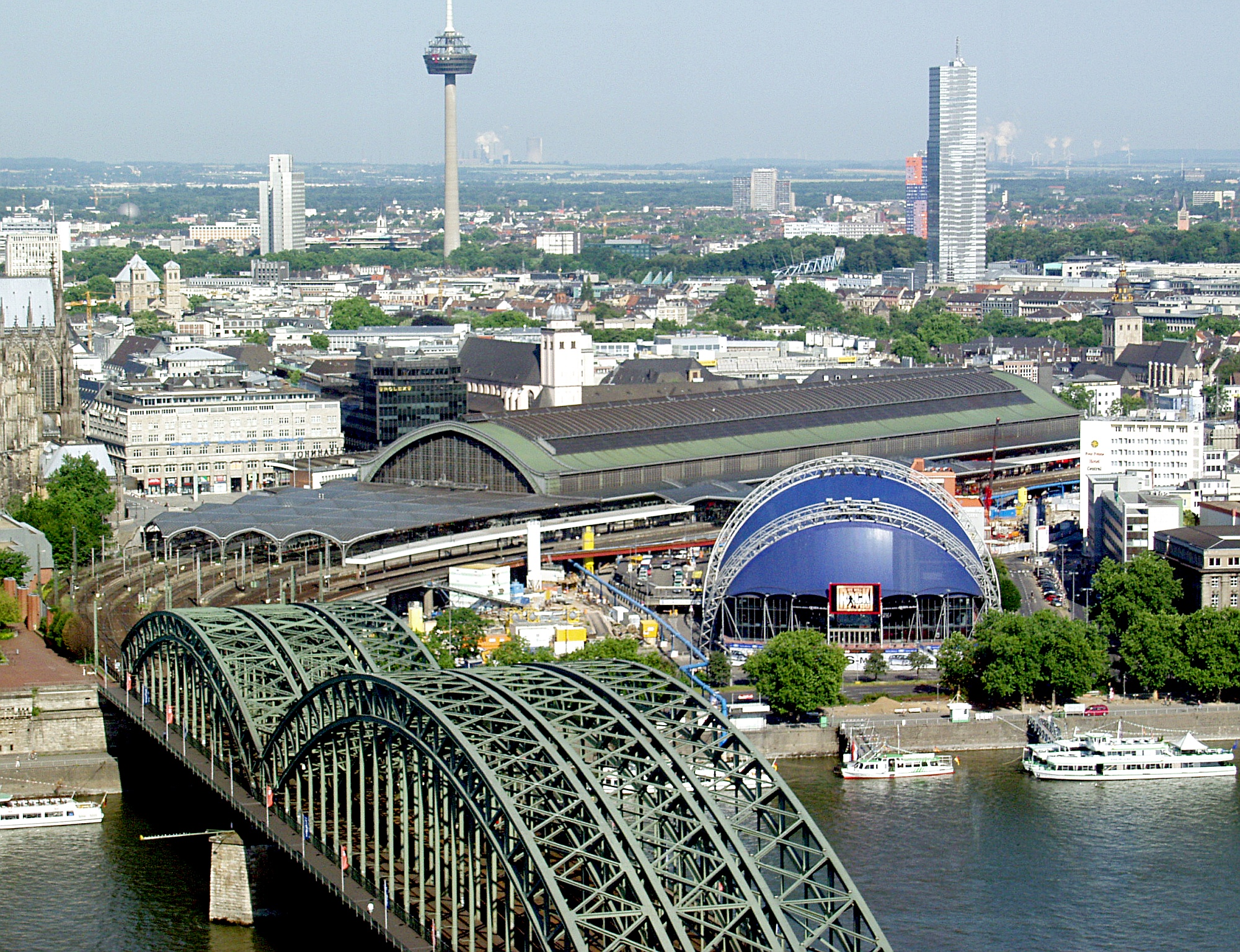|
Frankfurt Am Main Stadion Station
Frankfurt am Main Stadion station (german: Bahnhof Frankfurt am Main Stadion) is a junction railway station in Frankfurt, Germany. Stadion station is close to Frankfurt's main football stadium, the Commerzbank-Arena. Prior to 1937 it was called ''Frankfurt-Goldstein'' and from then until 24 December 2005 it was called ''Frankfurt-Sportfeld'' ("Sport field"). According to Deutsche Bahn it is used by 570 trains a day and is the busiest railway junction in Germany. The station is located about a kilometre from the stadium. Building The station building was built in the standard style used by the Hessian Ludwig Railway from 1879 on the Main Railway (''Mainbahn''). The first section opened in 1863 between Bischofsheim and Goldstein. The two-story station building was constructed of yellow sandstone with a gabled roof. The design of the station building stresses the horizontal and has a broad cornice separating the storeys. Services Stadion station is connected from the west by the ... [...More Info...] [...Related Items...] OR: [Wikipedia] [Google] [Baidu] |
Frankfurt
Frankfurt, officially Frankfurt am Main (; Hessian: , "Frank ford on the Main"), is the most populous city in the German state of Hesse. Its 791,000 inhabitants as of 2022 make it the fifth-most populous city in Germany. Located on its namesake Main River, it forms a continuous conurbation with the neighboring city of Offenbach am Main and its urban area has a population of over 2.3 million. The city is the heart of the larger Rhine-Main metropolitan region, which has a population of more than 5.6 million and is Germany's second-largest metropolitan region after the Rhine-Ruhr region. Frankfurt's central business district, the Bankenviertel, lies about northwest of the geographic center of the EU at Gadheim, Lower Franconia. Like France and Franconia, the city is named after the Franks. Frankfurt is the largest city in the Rhine Franconian dialect area. Frankfurt was a city state, the Free City of Frankfurt, for nearly five centuries, and was one of the most import ... [...More Info...] [...Related Items...] OR: [Wikipedia] [Google] [Baidu] |
Mainz-Bischofsheim Station
Mainz-Bischofsheim station is the station of the town of Bischofsheim in the German state of Hesse on the Main Railway from Mainz to Frankfurt am Main. It is classified by Deutsche Bahn as a category 4 station. The station is served by the S-Bahn and regional trains. The station was opened at its current location in 1904. Between 1930 and 1945, Bischofsheim was a district of the city of Mainz and, as a result, the station was renamed ''Mainz-Bischofsheim''. In 1945, the American and French occupying authorities transferred Bischofsheim to American administration and several months later it became part of the new state of Hesse. Although Bischofsheim became a self-governing municipality again as a result, the station is still called Mainz-Bischofsheim. History The Mainz rail bypass was built at the beginning of the 20th century to relieve Mainz Hauptbahnhof, running from Mainz via Wiesbaden to Bischofsheim. The construction of the Kostheim Bridge over the Main near Hochhe ... [...More Info...] [...Related Items...] OR: [Wikipedia] [Google] [Baidu] |
S7 (Rhine-Main S-Bahn)
The S7 service of the S-Bahn Rhein-Main The Rhine-Main S-Bahn system is an integrated rapid transit and commuter train system for the Frankfurt/Rhine-Main region, which includes the cities Frankfurt am Main, Wiesbaden, Mainz, Offenbach am Main, Hanau and Darmstadt. The network comp ... system bearing the KBS (German scheduled railway route) number 645.7 Routes Mannheim–Frankfurt railway History The S7 is the newest S-Bahn service in the system. It started its operation in 2002. Before that a regional railway service (RB 70) ran on exactly the same route. Operation External links traffiQ Frankfurt – S7 timetable {{Navbox Rhine-Main S-Bahn Rhine-Main S-Bahn ... [...More Info...] [...Related Items...] OR: [Wikipedia] [Google] [Baidu] |
2006 FIFA World Cup
The 2006 FIFA World Cup, also branded as Germany 2006, was the 18th FIFA World Cup, the quadrennial international football world championship tournament. It was held from 9 June to 9 July 2006 in Germany, which had won the right to host the event in July 2000. Teams representing 198 national football associations from all six populated continents participated in the qualification process which began in September 2003. Thirty-one teams qualified from this process along with hosts Germany for the finals tournament. It was the second time that Germany staged the competition and the first as a unified country along with the former East Germany with Leipzig as a host city (the other was in 1974 in West Germany), and the 10th time that the tournament was held in Europe. Italy won the tournament, claiming their fourth World Cup title, defeating France 5–3 in a penalty shoot-out in the final after extra time had finished in a 1–1 draw. Germany defeated Portugal 3–1 to finis ... [...More Info...] [...Related Items...] OR: [Wikipedia] [Google] [Baidu] |
Darmstadt Central Station
Darmstadt Hauptbahnhof is the main railway station in the German city Darmstadt. After Frankfurt Hbf and Wiesbaden Hbf, it is the third largest station in the state of Hesse with 35,000 passengers and 220 trains per day. Built in a late art nouveau style, the station was finished 1912 as one of the major works of architect Friedrich Pützer. The station replaced two separate and increasingly inadequate stations located at the ''Steubenplatz'', around a km closer to the city centre in the east. History The predecessors of Darmstadt Hauptbahnhof were two separate stations in today's , which were built by two railway companies in the 19th century when Darmstadt was connected to the rail network: the Main-Neckar station, a through station on the Frankfurt–Heidelberg line, opened in 1846, and the Ludwig station, a terminal station on the Mainz–Aschaffenburg railway, opened in 1858. The space at both stations became very cramped as a result of the increase in traffic at the end ... [...More Info...] [...Related Items...] OR: [Wikipedia] [Google] [Baidu] |
Main-Neckar Railway
The Main-Neckar Railway (german: Main-Neckar–Eisenbahn, MNE) is a main line railway west of the Odenwald in the Upper Rhine Plain of Germany that connects Frankfurt am Main to Heidelberg via Darmstadt, Bensheim and Weinheim. It was opened in 1846 and is one of the oldest railways in Germany. The railway line is part of the networks served by the Rhein-Main-Verkehrsverbund and Verkehrsverbund Rhein-Neckar. History The Main-Neckar Railway was built and operated as a joint state railway company, known as a ''condominium railway'' (''Kondominalbahn''), by the Free City of Frankfurt, The Grand Duchy of Hesse-Darmstadt and the Grand Duchy of Baden. Negotiations between the states The plans for the railway dated back to 1835. However, years went by until the three states involved agreed on routes and how it would be organised. Not until 1838 was a treaty for the construction of a Railway from Frankfurt to Mannheim via Darmstadt agreed. The Hessian Railway Company could not raise ... [...More Info...] [...Related Items...] OR: [Wikipedia] [Google] [Baidu] |
Frankfurt South Station
Frankfurt, officially Frankfurt am Main (; Hessian: , "Frank ford on the Main"), is the most populous city in the German state of Hesse. Its 791,000 inhabitants as of 2022 make it the fifth-most populous city in Germany. Located on its namesake Main River, it forms a continuous conurbation with the neighboring city of Offenbach am Main and its urban area has a population of over 2.3 million. The city is the heart of the larger Rhine-Main metropolitan region, which has a population of more than 5.6 million and is Germany's second-largest metropolitan region after the Rhine-Ruhr region. Frankfurt's central business district, the Bankenviertel, lies about northwest of the geographic center of the EU at Gadheim, Lower Franconia. Like France and Franconia, the city is named after the Franks. Frankfurt is the largest city in the Rhine Franconian dialect area. Frankfurt was a city state, the Free City of Frankfurt, for nearly five centuries, and was one of the most important ... [...More Info...] [...Related Items...] OR: [Wikipedia] [Google] [Baidu] |
Frankfurt Central Station
Frankfurt (Main) Hauptbahnhof, also called Frankfurt Central Station and Frankfurt Main Station, is the busiest railway station in the German state of Hesse. Because of its location near the middle of Germany and usage as a transport hub for long and short distance travelling, Deutsche Bahn refers to it as the most important station in Germany. Name The affix "Main" comes from the city's full name, ''Frankfurt am Main'' ("Frankfurt on the River Main") and is needed to distinguish it from Frankfurt (Oder) station on the River Oder in Brandenburg. In German, the name is often abbreviated as Frankfurt (Main) Hbf. History 19th century In the late 19th century, three stations connected Frankfurt to the west, north and south, the *''Taunus station'' for the Taunusbahn (opened 1839), connecting Frankfurt to Wiesbaden *''Main-Neckar-station'' for the Main-Neckar Railway to Darmstadt, Heidelberg and Mannheim (1848)) *''Main-Weser station'' for the Main–Weser Railway to Kasse ... [...More Info...] [...Related Items...] OR: [Wikipedia] [Google] [Baidu] |
Cologne Central Station
Cologne ( ; german: Köln ; ksh, Kölle ) is the largest city of the German western state of North Rhine-Westphalia (NRW) and the fourth-most populous city of Germany with 1.1 million inhabitants in the city proper and 3.6 million people in the urban region. Centered on the left (west) bank of the Rhine, Cologne is about southeast of NRW's state capital Düsseldorf and northwest of Bonn, the former capital of West Germany. The city's medieval Catholic Cologne Cathedral (), the third-tallest church and tallest cathedral in the world, constructed to house the Shrine of the Three Kings, is a globally recognized landmark and one of the most visited sights and pilgrimage destinations in Europe. The cityscape is further shaped by the Twelve Romanesque churches of Cologne, and Cologne is famous for Eau de Cologne, that has been produced in the city since 1709, and "cologne" has since come to be a generic term. Cologne was founded and established in Germanic Ubii terri ... [...More Info...] [...Related Items...] OR: [Wikipedia] [Google] [Baidu] |
Cologne–Frankfurt High-speed Rail Line
The Cologne-Frankfurt high-speed railway (german: Schnellfahrstrecke Köln–Rhein/Main) is a railway line in Germany, connecting the cities of Cologne and Frankfurt. Its route follows the Bundesautobahn 3 for the greater part, and currently the travel time is about 62 minutes. The line's grades of up to four percent require trains with a high power-to-weight ratio which is currently only met by third-generation Intercity-Express trains. It was constructed between 1995 and 2002 at a total cost of six billion Euro according to Deutsche Bahn. Operational use The line starts in Cologne at the ''Abzweig Köln-Steinstrasse'' in the Cologne borough of Porz. Whilst the connection loop to Cologne-Bonn Airport, the Cologne Airport loop, is technically not a part of the high-speed line, it was built as a part of the general refurbishments in the Cologne area due to the line, and hence is generally regarded as part of the project. The line has four stations, Siegburg/Bonn, Montabaur, ... [...More Info...] [...Related Items...] OR: [Wikipedia] [Google] [Baidu] |
Mannheim Central Station
Mannheim Hauptbahnhof (German for ''Mannheim central station'') is a railway station in Mannheim in the German state of Baden-Württemberg. It is the second largest traffic hub in southwestern Germany after Stuttgart Hauptbahnhof, with 658 trains a day, including 238 long-distance trains. It is also a key station in the Rhine-Neckar S-Bahn. 100,000 passengers embark, disembark or transfer between trains at the station each day. The station was modernised in 2001. It is classified by Deutsche Bahn as a category 2 station. Layout The station is located on the southern edge of central Mannheim. In November 2001, the station was comprehensively redeveloped with a modern shopping and service centre. Travellers reach the platforms via escalators and lifts in the wings of the entrance hall, which lead to a northern and a southern subway under the tracks. The routes to the platforms have been upgraded to make them accessible for the disabled. Lifts, escalators and a direction system for ... [...More Info...] [...Related Items...] OR: [Wikipedia] [Google] [Baidu] |
Rhine-Main S-Bahn
The Rhine-Main S-Bahn system is an integrated rapid transit and commuter train system for the Frankfurt/Rhine-Main region, which includes the cities Frankfurt am Main, Wiesbaden, Mainz, Offenbach am Main, Hanau and Darmstadt. The network comprises nine S-Bahn lines, eight of which currently travel through the cornerstone of the system, a tunnel (the "City Tunnel") through central Frankfurt. The first section of this tunnel was opened on May 28, 1978. Further tunnel sections were opened in 1983 and 1990, before its completion in 1992. The system belongs to the Rhein-Main-Verkehrsverbund (RMV) and is operated by DB Regio, a subsidiary of Deutsche Bahn. End-to-end journey times on the nine lines in the system range from 36 minutes (on line S7) up to 87 minutes (on line S1). The longest journey time into central Frankfurt ( Hauptwache), from any point on the network, is 54 minutes. Services on some lines start shortly after 4a.m., while all lines have services from about 5a.m. on ... [...More Info...] [...Related Items...] OR: [Wikipedia] [Google] [Baidu] |








